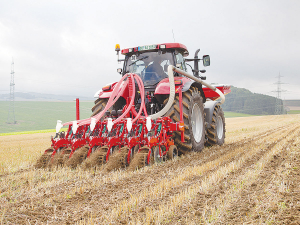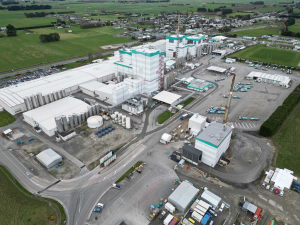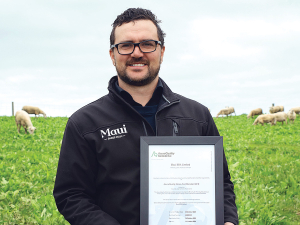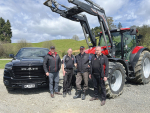Kverneland distributor Power Farming says its KultiStrip System will help farmers to cultivate environmentally, while improving yields and profitability.
It’s a technically unique, one-pass cultivator- fertiliser machine, which encompasses a strip-till system to reduce cultivation costs, aid plant establishment, improve soil condition and ensure yields.
Strip tillage, used for more than 20 years in North America, is an innovative method of preparing the soil for row crops – such as maize, beet, sunflower, canola, sorghum, soya, vegetables and hybrid corn.
Only disturbing the soil where the crop will grow, the uncultivated soil between the strips and the layer of residue that remains helps prevent erosion. It also increases water absorption and retention in the soil, meanwhile creating a significant reduction in tillage costs.
Within the cultivated row that only represents 30% of the field area, trash is removed with the resulting fine seedbed offers ideal conditions for young plants to establish. When creating the seedbed, fertiliser can also be placed near the plants for best utilisation.
With less of the paddock being cultivated, there is a possibility of completing work during poor weather conditions or planting earlier in the season to help bring harvest dates forward.
Looking at the machine in more detail, the rigid 3000, 4500 and 6000 models have working widths of 3, 4.5 and 6 metres respectively and feature a heavy-duty mainframe. Alternatively, the 4500F and 6000F models have hydraulically- folding frames, which bring the units down to 3m wide and 4m high to meet transport regulations.
Both the rigid and folding designs of the Kultistrip can be fitted with even or an uneven number of rows, with a row width of 45-80cm. The 3m unit can config- MARK DANIEL This email address is being protected from spambots. You need JavaScript enabled to view it. ured with up to six rows, the 4.5m up to 10 rows, and the 6m unit up to 13 rows. Up front, 520mm discs cut through crop residues and open the soil to a pre-set depth before adjustable trash wheels remove any plant residues from the cultivated strip. Next, tines work to a maximum depth of 30cm, while an adjustable strip limitation disc determines the width and shape of the cultivated strip, which helps keep loose soil within the “worked” strip. Finally, a press wheel consolidates the soil using a rubber Farm Flex wheel or optional cage roller or V-press wheels for varying soil types.
Fertiliser is placed in the lower levels of the profile by the fertiliser coulter, allowing the soil to be worked in a single pass. Alternatively, the Kultistrip machine can be used in conjunction with an effluent tanker to place liquid manure in the soil profile at a predetermined depth.
Given the increasing awareness of the need to improve the quality New Zealand’s waterways and the implementation of specific regional rules, the Kultistrip offers growers and contractors a tool that helps limit erosion, particularly on sloping ground.











